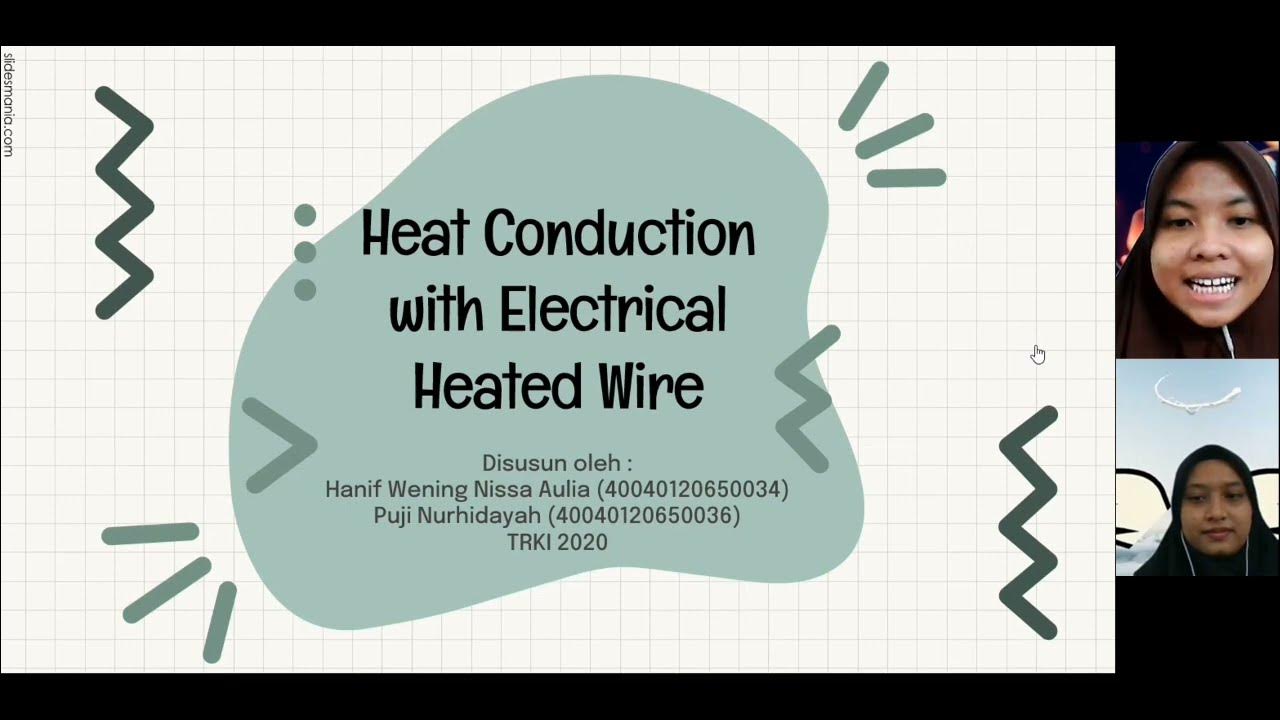9. Fenomena Transport - Termodinamika - Fisika N20
Summary
TLDRThis video delves into the fundamental principles of transport phenomena in thermodynamics, focusing on mass, heat, and momentum transfer processes. It explains the mechanisms behind each type of transfer, including diffusion, heat conduction, and momentum flow, with examples from real-world processes like distillation, fluid flow, and heat transfer in materials. The video also covers relevant mathematical laws such as Fick's Law, Fourier's Law, and Newton's Law, providing practical examples to illustrate the application of these principles in solving engineering problems, such as heat insulation and diffusion in metals.
Takeaways
- 😀 Transport phenomena study the transfer of mass, heat, and momentum in materials.
- 😀 Fick's Law governs mass transfer and describes the flux of mass in a medium.
- 😀 Fourier's Law is used to describe heat transfer, showing how heat moves from hot to cold regions.
- 😀 Newton's Law of Viscosity describes momentum transfer, often seen in laminar fluid flow.
- 😀 Conduction involves heat transfer without mass transfer, while convection involves both mass and energy transfer.
- 😀 Radiation is the transfer of heat through electromagnetic waves, without requiring a medium.
- 😀 Thermal conductivity and diffusion coefficients are essential parameters for solving transport phenomenon problems.
- 😀 The thickness of insulating materials can be calculated using Fourier’s Law to minimize heat loss.
- 😀 In mass transfer, examples like distillation and absorption illustrate how substances move between phases.
- 😀 Diffusion coefficients can be determined through problems involving the concentration change of a substance over time and space.
- 😀 Real-life applications include understanding processes like cooling food, heating water, and diffusion in metals.
Q & A
What is the concept of 'phenomena transport' as discussed in the video?
-Phenomena transport is the study of processes involving the transfer of mass, heat, and momentum within materials.
What is the law related to mass transfer?
-The law related to mass transfer is Fick's Law, which mathematically describes the flux of mass transfer.
What example demonstrates the concept of mass transfer?
-An example of mass transfer is the diffusion of nitrogen into oxygen through a pipe when a valve is opened, allowing mass to move between the two gases.
What law governs heat transfer, and how is it represented mathematically?
-Heat transfer is governed by Fourier's Law, which is mathematically represented as the heat flux being proportional to the temperature gradient.
Can you explain the process of heat transfer using the example of a heated metal rod?
-In the case of a heated metal rod, heat flows from the hotter end to the cooler end. The heat transfer follows Fourier’s Law, where the heat flux is proportional to the temperature difference and material's thermal conductivity.
What is the mechanism of momentum transfer, and what law is it based on?
-Momentum transfer is the movement of momentum in fluid flow, and it is described by Newton's Law of Viscosity. This law involves the relationship between velocity gradients and the viscous forces in a fluid.
What is the difference between conduction, convection, and radiation in terms of heat transfer?
-Conduction is the transfer of heat through a material without the movement of matter. Convection involves the transfer of heat along with the movement of the fluid, while radiation is heat transfer through electromagnetic waves without requiring a medium.
What factors influence thermal conductivity in gases, liquids, and solids?
-In gases, thermal conductivity is a function of temperature and can be predicted using kinetic theory. In liquids and solids, it depends on molecular interactions and electron movement, but accurate mathematical models for liquids and solids are still under research.
How do you calculate the thickness of an insulating material based on thermal conductivity?
-The thickness of an insulating material can be calculated using Fourier's Law for heat transfer, with the given thermal conductivity, surface area, and temperature difference.
What are the applications of diffusion processes like in the example of Titanium and carbon diffusion?
-In diffusion processes like Titanium carbon diffusion, it is used in material science to alter the properties of a material by introducing another substance (like carbon) to a specific depth within the material.
Outlines

This section is available to paid users only. Please upgrade to access this part.
Upgrade NowMindmap

This section is available to paid users only. Please upgrade to access this part.
Upgrade NowKeywords

This section is available to paid users only. Please upgrade to access this part.
Upgrade NowHighlights

This section is available to paid users only. Please upgrade to access this part.
Upgrade NowTranscripts

This section is available to paid users only. Please upgrade to access this part.
Upgrade NowBrowse More Related Video

BE3002 Transport Phenomena in Biosystem Module 1_Segment 2

Termodinamika • Part 4: Hukum Kedua Termodinamika, Mesin Carnot & Mesin Pendingin

Pendahuluan - Perpindahan Kalor dan Massa

12th Science | Thermodynamics in 1 Shot | HSC | MHT-CET

FENOMENA PERPINDAHAN PANAS KABEL LISTRIK SILINDER

Basic Concepts of Thermodynamics [Year - 1]
5.0 / 5 (0 votes)